I
Introduction
Wildlife charities play a crucial role in global sustainability. To begin with, the health and welfare of animals are critical to the health of our planet. Hence, wildlife is essential to sustaining a healthy environment .
Also, the rapid decline of biodiversity has serious ecological ramifications. Society must recognize the cascading effects throughout ecosystems when wildlife populations are threatened.
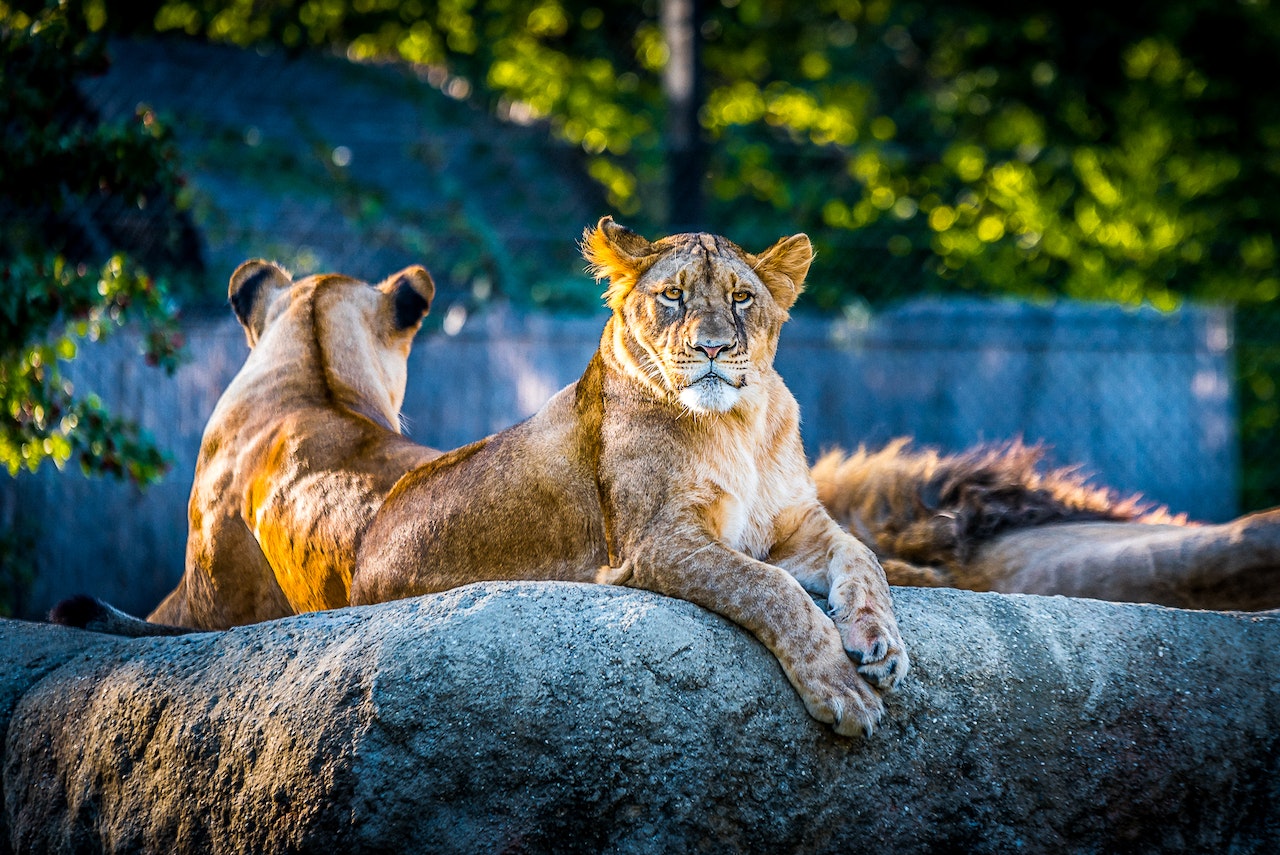
All ecosystems become less resilient and more vulnerable with the decline in wildlife growth. Consequently, the absence of resilient ecosystems makes some sectors substantially more vulnerable. This is especially true in the areas of agriculture, water management systems, and sectors such as wildlife-based tourism. Not to mention, humans become far more exposed to the perils of climate change or the disastrous spread of zoonotic disease.
In light of this, we will consider the impact of wildlife charities globally and organizations that are worthy of support and recognition.
II
What are Wildlife Charities?
Wildlife charities work to alleviate and eradicate the pain of helpless animals suffering from inhumane treatment. In addition, these organizations advocate for enhanced welfare and help to pass progressive legislation. By and large, the goal is to protect animals from being hunted and trafficked while ensuring their rights to live.
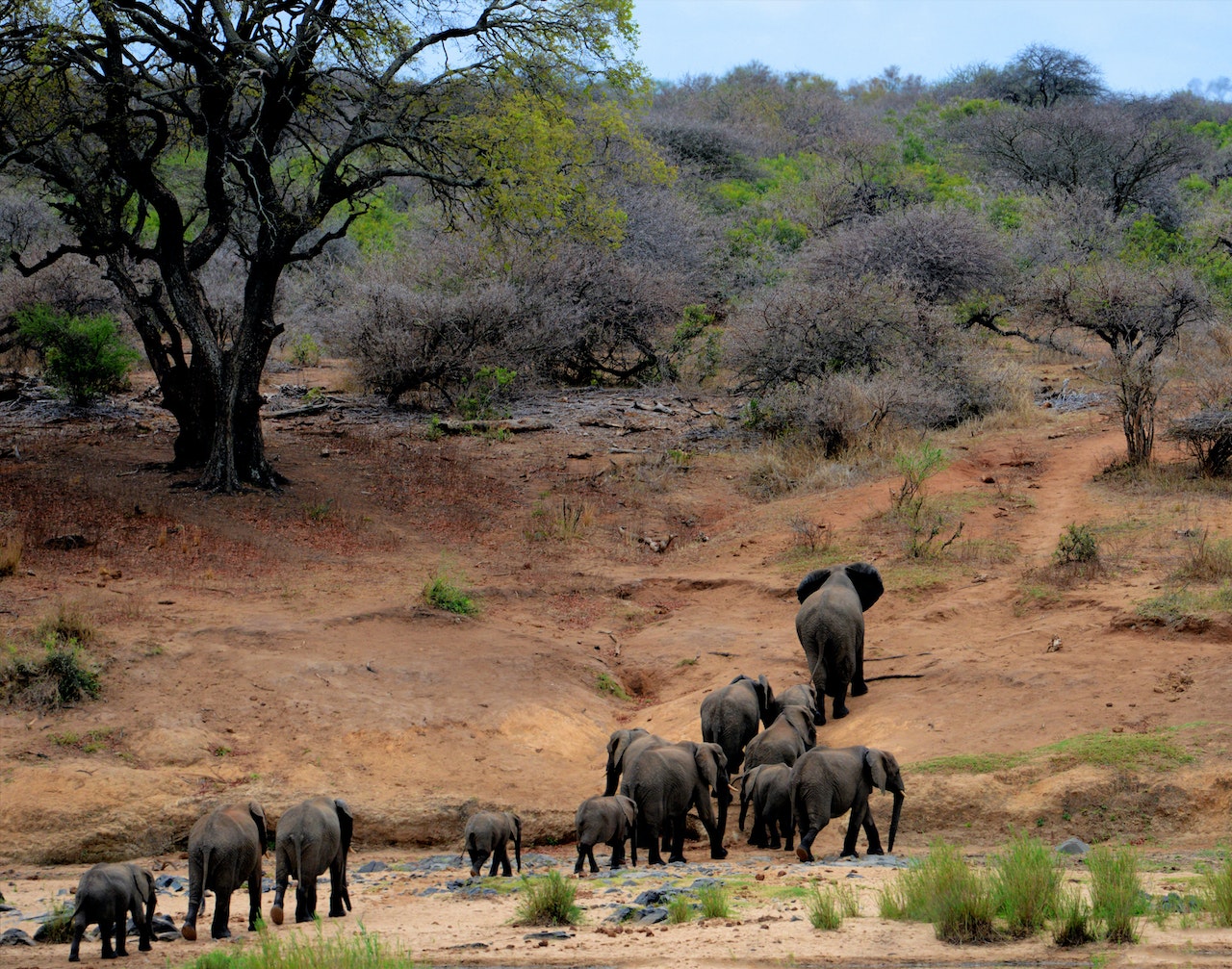
These organizations seek to address various concerns. While some groups focus on specific activities, such as animal shelters for abandoned or lost companion animals, others are more broad in their scope, lobbying on a variety of local and international concerns.
Now more than ever, our relationship with the natural world demands more care and attention as we increasingly tackle global concerns. Hence, wildlife charities seek to contribute to sustainable human progress by embracing the critical need for animals on our planet.
Animals play an important role in building a sustainable future as they serve as a link between people and the environment. In addition, we as humans continue to rely on animals for our livelihood. Therefore, there is a need for intercommunication to ensure the survival of both humans and animals.
III
Critical Statistics on Wildlife Charities and Animal Welfare
The growing interest in animal welfare has resulted in the establishment of new wildlife charities. The World Animal Network reports that there are currently over 20,000 official animal protection organizations in over 100 countries. Also, in the mid-2000s, Australia witnessed a speedy rise in the number of animal charities even surpassing the overall nonprofit industry in Australia.
According to a poll, the United States has the highest average animal value score, with one-third of respondents stating that animals should have the same rights as humans. In contrast, the Chinese group earned the lowest score. Two-thirds of those polled said they had never heard the term “animal welfare.”
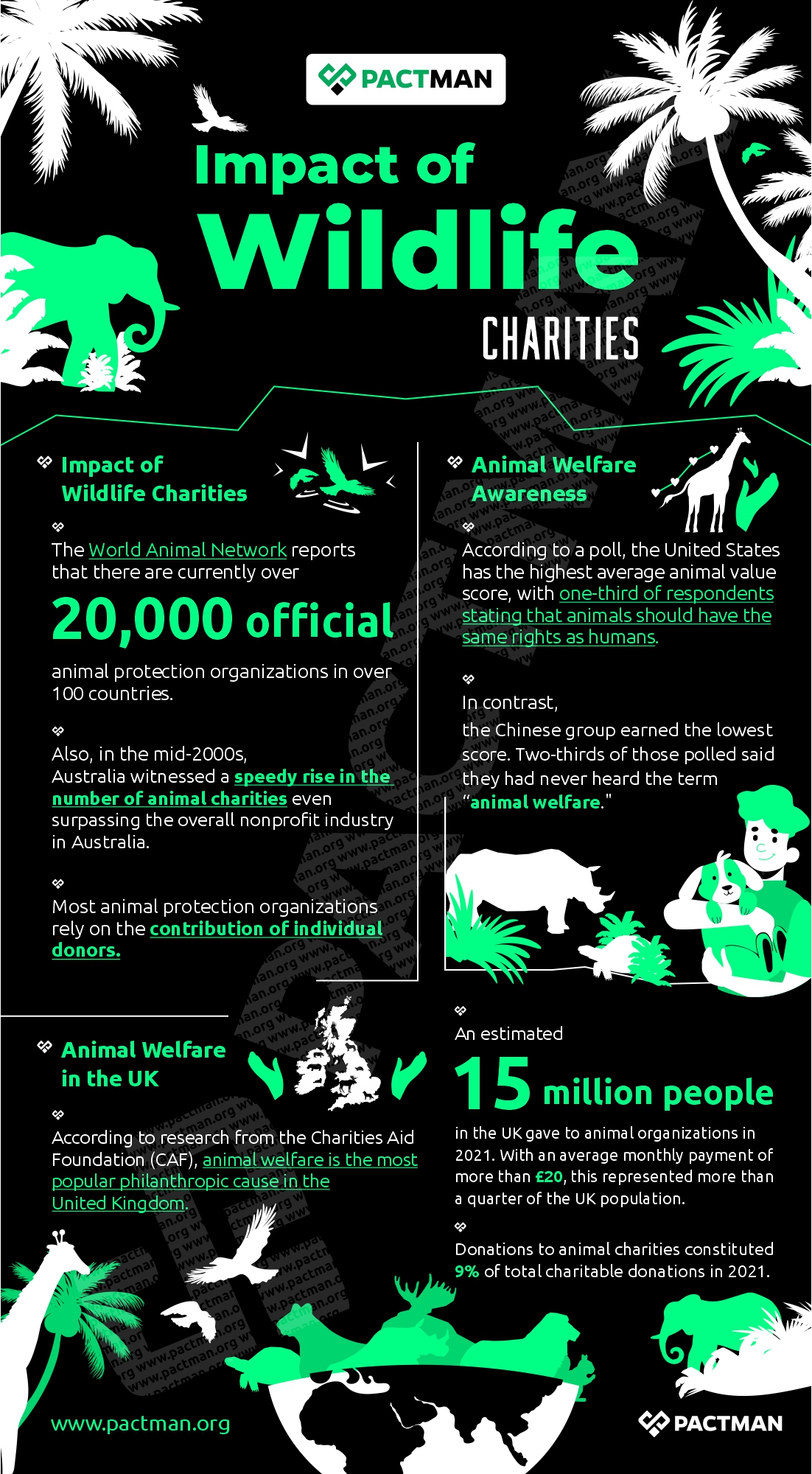
Furthermore, environmental and animal welfare are sponsored at a disproportionate rate in the United States, accounting for only 3% of overall philanthropic contributions. By and large, the majority of American donors do not support animal causes. Over three-quarters of donors in the country have not donated to animal causes in the previous year. Nonetheless, support for animal charities is more popular among Generation X and Baby Boomers.
According to research from the Charities Aid Foundation (CAF), animal welfare is the most popular philanthropic cause in the United Kingdom. An estimated 15 million people gave to animal organizations in 2021. With an average monthly payment of more than £20, this represented more than a quarter of the UK population. Also, donations to animal charities constituted 9% of total charitable donations in 2021.
Presently, over 7 million dogs and cats need homes, while 300 million animals are subjected to harsh experimental tests.
Most animal protection organizations rely on the contribution of individual donors. However, this income source is still less than that of other causes. Also, many animal charities have to commit a significant amount of time to fundraising, with varying degrees of success. Email fundraising accounts for 57% of all online earnings for animal protection organizations.
IV
The Importance of Wildlife Charities and Conservation Efforts
Wildlife conservation initiatives include efforts to conserve wild animal habitats and ecosystems, safeguard wild animal populations, and avoid the extinction of endangered species. Also, it entails tracking species population trends and controlling natural resource usage to maintain ecosystem balance and enhance the survival and genetic diversity of wild populations.
This section will consider the importance of animal welfare and conservation efforts.
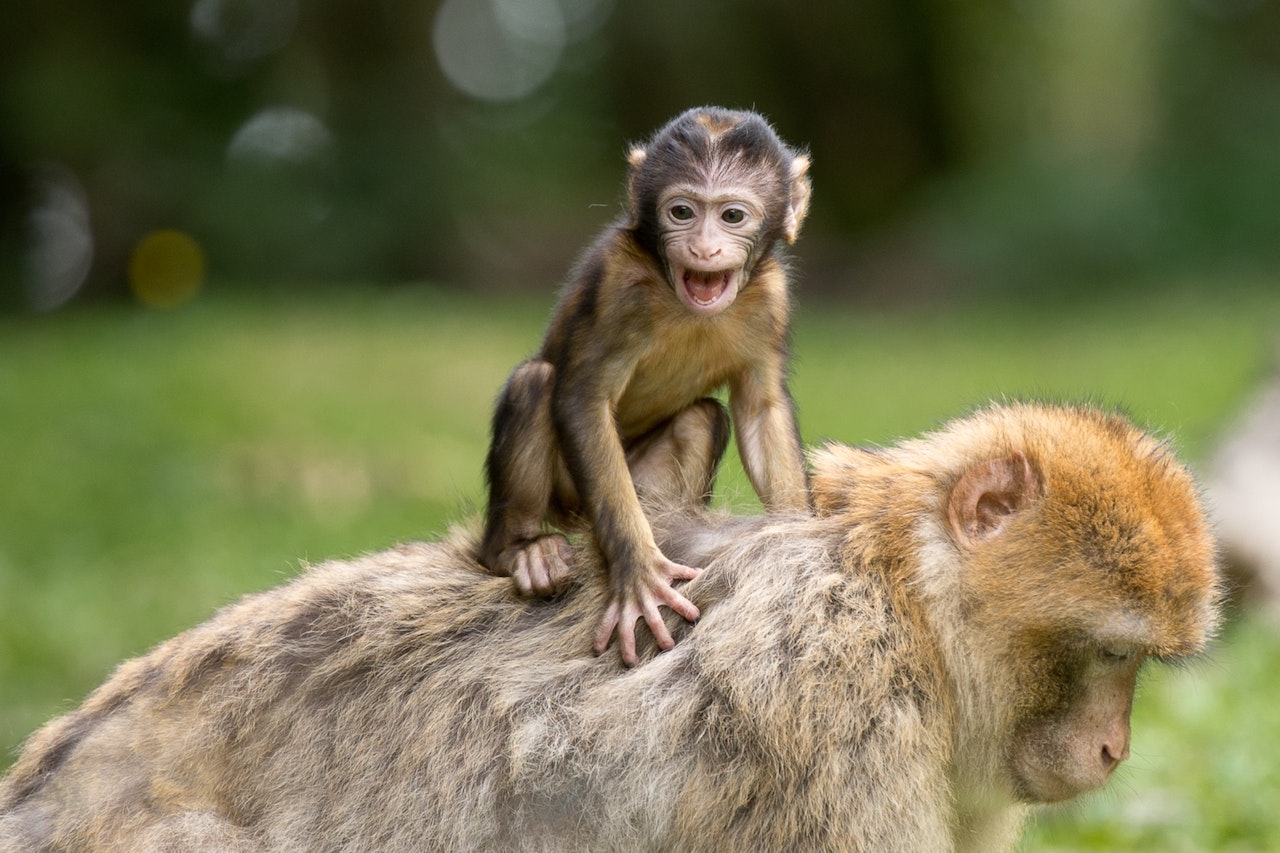
a. Ecosystem Restoration
Essentially, Wildlife conservation aids in the maintenance and restoration of ecosystem balance. Furthermore, it helps prevent habitat and biodiversity loss while promoting a more sustainable connection between humans and wild animals. Healthy and well-cared-for animals and ecosystems support agricultural and natural processes. This in turn helps to improve food security and reduce world hunger.
b. Improves Agriculture
Animal pollination is necessary for the reproduction of 75% of the world’s crop species. The global loss of pollinators greatly affects agricultural production. This shows that conservation-led measures are critical to attaining multiple targets in SDG 2 (zero hunger). Understanding the importance of animals in agriculture while enhancing animal welfare and wildlife conservation is crucial to alleviating global hunger.
c. Promotes water security
Also, wildlife species have a significant impact on the natural infrastructure of the habitats they occupy, notably water resources. Beavers, for example, build dams and fell trees to create ponds in otherwise dry forests. Wetlands restore groundwater aquifers and offer nutrients to plants that filter and store water. By and large, these ecosystem services provide a significant source of freshwater and play an important role in ensuring water security.
d. Contributes to human health
Animal welfare also positively impacts long-term human health, which is critical for the physical and psychological well-being of communities. Pet ownership has been proven in studies to aid in the recovery and prevention of chronic illnesses. Evidence also proves that pets can help with mental problems.
e. Promotes sustainable living
Many of the world’s poorest obtain their livelihood from animals. More than 650 million people (largely comprising the world’s poorest) rely on animals for food, and animals are often their primary source of wealth. Animal welfare measures ensure the decent handling of working animals. Likewise, the care of animals tends to add value to the impoverished and neighboring communities that rely on them.
Humans as well as the planet depend on the services offered by healthy natural systems. Without a doubt, these services must include animals because they impact essential issues such as food security, employment, public health, and climate mitigation. Hence, the critical interaction between humans and nature remains fundamental for sustainability.
v
Top Wildlife Charities Globally
In this section, we will consider some of the most impactful wildlife charities globally and their contribution to animal welfare.
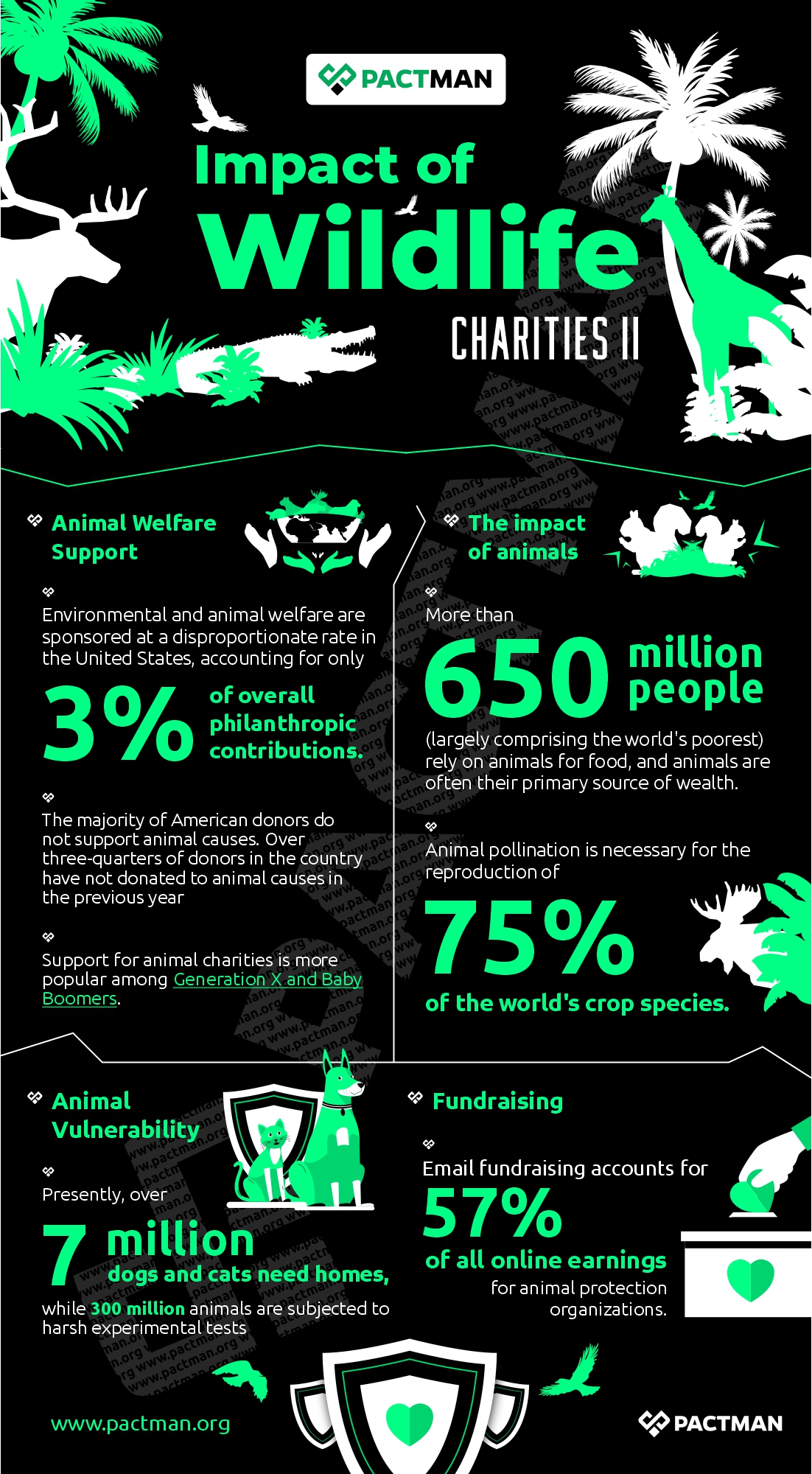
1. Wildlife Conservation Society (WCS)
WCS was created in 1895 with three goals in mind: to open a zoological park, to promote zoological research, and to preserve nature.
By and large, the organization seeks to save the world’s largest wild places in 14 priority zones. Essentially, these zones are home to more than half of the world’s biodiversity. Hence, the organization works to rescue species and preserve natural areas around the world through science, conservation action, and education while inspiring people to appreciate nature.
WCS envisions a world in which wildlife thrives in healthy lands and oceans while being appreciated by societies that value the diversity and integrity of life on Earth.
Over the years, the organization has prioritized the most pressing issues confronting nature. Likewise, WCS continues to develop new ways to address the next century’s concerns. These concerns include the zoonotic pandemic crisis, biodiversity loss, and the climate crisis.
2. African Wildlife Foundation
African Wildlife Foundation is a global conservation organization established in Africa. The organization works to protect wildlife and their habitats. By presenting a distinct vision of African-led conservation, the African Wildlife Foundation focuses on solutions that create opportunities for people – not at the expense of wildlife and their ecosystems, but in their place.
The foundation believes that Africa now more than ever needs to address conservation and development issues quickly and directly while the continent is still in its early stages of economic development.
If these issues are not addressed, the potential positive socioeconomic, political, and environmental gains of the continent will be short-lived. As a result, the organization works to assist African governments and people in navigating the ongoing economic shift while preserving a major and representative patrimony of wildlife and wild places.
3. WWF
The World Wildlife Fund was founded in 1961 by a passionate group of individuals to safeguard places and species threatened by human development. For over 60 years, WWF has been at the forefront of bridging the gap between people and ecology to ensure a thriving planet.
The organization operates in 100 countries as the world’s prominent conservation charity. Also, WWF works with people all over the world to design and deploy creative solutions that safeguard communities, wildlife, and the environments in which they live.
The organization’s three primary goals include: protecting and restoring biodiversity, reducing humanity’s environmental imprint, and ensuring the sustainable use of natural resources to support current and future generations. WWF has over 1.3 million supporters in the United States and 5 million worldwide.
4. World Animal Protection
World Animal Protection envisions a world devoid of cruelty and suffering for animals. Hence, the global movement works to transform the world by putting an end to animal cruelty.
The primary goal of the organization is to safeguard animals all over the world which it continues to strive for even after 70 years. Also, World Animal Protection considers itself a global voice for animals as the organization stands out for its knowledge and skills. By establishing a movement comprising millions of individuals, the organization continues to extend its frontiers while ensuring a world free of animal cruelty and misery.
World Animal Protection influences the highest levels of government while challenging companies, altering minds, and encouraging people to participate. The organization advocates for change at every level, from alerting governments to the devastating impact of fishing waste on ocean wildlife to assisting tourists in planning elephant-friendly vacations. World Animal Protection has offices in over 12 countries and the UK.
5. International Rhino Foundation (IRF)
IRF is a United States animal charity that runs on-the-ground initiatives in Africa and Asia where rhinos live in the wild. The foundation seeks to ensure the survival of the five remaining rhino species and the communities that live with them.
IRF has financed rhino conservation initiatives in ten countries through grants and field programs. By and large, the organization focuses on scientific research, anti-poaching, habitat conservation, captive breeding, environmental education, and demand reduction. Overall, more than $20 million has been committed to rhino conservation during the previous decade.
IRF was founded in the early 1990s in response to the intense poaching of Zimbabwe’s black rhinos. Through the help of donors, the organization has nearly eradicated the threat and stabilized the population. Also, IRF continues to support conservation efforts in Zimbabwe and has expanded to include all five rhino species.
By placing a premium on teamwork, IRF achieves its common goals for rhinos through a global network. This network comprises hundreds of conservation organizations, private foundations, corporations, government agencies, and individuals like you.
6. Defenders of Wildlife
Defenders of Wildlife is the leading U.S.-based national conservation group founded in 1947 to protect and restore endangered animals and their habitats in North America. Primarily, the organization is committed to preserving all native animals and plants in their natural habitats.
Defenders of Wildlife work to protect and restore threatened species across North America by changing policies and institutions and advocating creative solutions. The organization speaks with a unified voice informed by scientific, legal, and policy understanding, on-the-ground wildlife management experience, and effective advocacy.
Defenders of Wildlife envision a future in which North America’s various animal populations are secure and prospering, supported by a network of healthy lands and waters.
7. Jane Goodall Institute (JGI)
Jane Goodall Institute is a global community conservation group dedicated to advancing Dr. Jane Goodall’s vision and work. The organization works to improve the lives of people, animals, and the environment by preserving chimps and inspiring others to conserve the natural world.
As a worldwide conservation organization, the institute’s strategy has always been community-centered, while collaborating across industries, regions, and cultures to maximize impact. The goal is to improve the lives of people, animals, and the environment through international and local collaboration. Also, communities are empowered to take the lead in effecting positive change.
JGI has taken a dynamic, conscious method known as the “triangle approach.” The triangle strategy is based on the collaboration of three diverse entities: law enforcement, environmental education programs, and sanctuaries. JGI’s environmental education initiatives enlighten target communities on what they can do to help safeguard great apes and the consequences of harming them.
8. Save the Elephants
Save the Elephant prioritizes three objectives. The organization works to ensure elephants’ futures while also preserving the beauty and ecological integrity of the areas where they reside; to encourage man’s delight in their intelligence and the diversity of their world; and to foster a respectful relationship between the two species.
The primary aim of the organization is to ensure elephants’ survival. As a result, Save the Elephant specializes in elephant study and provides scientific insights into elephant behavior, intelligence, and long-distance movements. The research is then applied to address the issues of elephant survival and peaceful coexistence with humans.
Also, high-tech tracking assists in landscape planning, while low-tech beehive fences, among other techniques, provide protection and income to people and communities living with elephants. Through the organization’s education and outreach programs, these insights are shared with local communities.
Also, in collaboration with the Wildlife Conservation Network, Save the Elephants manages the Elephant Crisis Fund, which provides flexible and responsive financing to NGOs combating the ivory trade. The goal is to foster human-elephant coexistence and safeguard elephant habitats.
9. Wildlife Warriors
Wildlife Warriors pursues a central and vital cause: the preservation of animals and wild spaces. The organization was founded by Steve and Terri Irwin in 2002. By including and involving other concerned people, the organization continues to impact wildlife conservation.
Wildlife Warriors work to preserve injured, threatened, or endangered animals, this includes individual animals as well as entire species.
The organization seeks to create a world where people, wildlife, and habitats can coexist and thrive without interfering with one another. Hence, Wildlife Warriors delivers outcome-based programs and initiatives to achieve their goals.
VI
Conclusion
Wildlife conservation and wild animal welfare efforts work together to preserve and protect wild animals. Likewise, by developing a better understanding of wild animals, we can have a more humane approach to how we embrace the welfare of these species across all sectors.
Governments must also be willing to adopt development programs that recognize the importance of animal issues in sustainable development. By and large, this ensures the benefits of both humans and the environment.
To sum it all up, wildlife conservation initiatives include efforts to do the following:
- Conserve wild animal habitats and ecosystems.
- Safeguard wild animal populations.
- Avoid the extinction of endangered species.
If you enjoyed reading this article, do let us know. Please share your comments and suggestions with us at the bottom of this post.



One Response